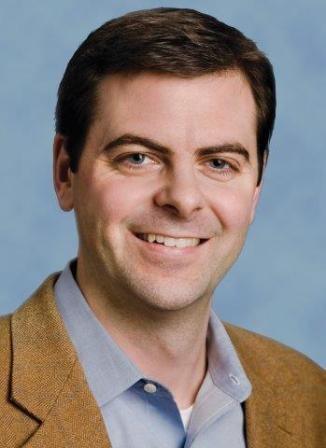Sep 11 2013
The vision for a new branch of medicine, inspired by the ancient field that began with peg legs and hand hooks, commanded the spotlight in a major address by its pioneer here today at the 246th National Meeting & Exposition of the American Chemical Society (ACS), the world’s largest scientific society.

Martin D. Burke, M.D., Ph.D.
Martin D. Burke, M.D., Ph.D., focused on the field he has named “molecular prosthetics,” after the small molecules that make up the ingredients in most drugs and the branch of medicine that involves artificial or prosthetic body parts.
“Artificial limbs replace the function of an arm or leg that’s missing due to injury,” Burke said. “Some diseases occur because proteins in the body are missing or not working properly. Molecular prosthetics envisions treating those diseases with medicines that replace the functions of the missing proteins.”
Burke described advances toward making molecular prosthetics a reality, including progress in developing a platform that would revolutionize the now-tedious processes of making or synthesizing the ingredients for those drugs. Burke, who is with the Howard Hughes Medical Institute and University of Illinois at Urbana-Champaign, delivered the “Kavli Foundation Emerging Leader in Chemistry Lecture” at the meeting.
It was among almost 7,000 presentations on new advances in science and other topics on the ACS meeting agenda this week. Sponsored by the Kavli Foundation, the Emerging Leaders Lectures recognize the work of outstanding young chemical scientists. The presentations shine the spotlight on scientists younger than 40 years old and not more than 10 years removed from earning their doctorate degrees when nominated, and who have made exceptional achievements in scientific or engineering research.
Burke and his team already have gained fame for improvements in the Suzuki-Miyaura cross-coupling reaction of boronic acids. Despite the obscure name, that Nobel Prize-winning reaction is one of the most important and widely used tools in organic chemistry. It is the basis for the manufacture of ingredients for medicines, plastics, perfumes, herbicides and other products. Burke’s team developed special building blocks that can be used in the reaction to make some small molecules in days instead of months or years. The building blocks are available commercially, and drug companies are using them in the search for new medicines.
In the Kavli lecture, Burke described advances to simplify and speed up the synthesis of the small molecules needed for molecular prosthetics. More than 90 percent of today’s medicines use active ingredients that are small molecules. These substances can be processed into tablets and capsules and taken by mouth. They can dissolve in the gastrointestinal tract, go into the blood and travel to and work in almost every part of the body. The rest of today’s medicines are large molecules or “biologics” that like insulin cannot be taken by mouth.
“For molecular prosthetics to become a reality, we must overcome two major challenges,” Burke explained. “First, it can take months or even years to synthesize just one molecule. With our new platform, we could reduce that to a few days. The second challenge is to fundamentally understand the capacity for small molecules to operate like proteins in the context of living systems. That understanding is critical to being able to design the most effective molecules.”
Burke’s team has been focusing on a small molecule called amphotericin B, currently used to treat fungal infections. Amphotericin B inserts itself into the membrane that surrounds and encloses cells in the body. Once in the membrane, amphotericin B forms channels that enable the transport of ions into and out of the cell, an activity that mirrors many proteins whose function is critical in health and disease. A whole group of human diseases, sometimes called channelopathies, result from malfunction of ion channel proteins. Among them: migraine, epilepsy and cystic fibrosis. The team is working to use amphotericin B as a basis for making small molecules that replace the missing or malfunctioning ion channel proteins and thereby treat these diseases.
“We realized early in our studies that the lack of efficiency and flexibility with which small molecules can be prepared in the lab represented a major bottleneck in our efforts to develop small molecules with protein-like functions. We are now excited to find that our new synthesis platform can help relieve this important bottleneck and thereby enable us to focus more of our time on the key functional studies. Drug companies also have this problem with the long timelines needed to synthesize small molecules,” Burke noted. “That’s part of the reason why it takes so long to develop new medicines. This is a broad problem, and our goal is to help speed up this process and thereby have an important impact on science and medicine.
“With advances in genomics, a person will soon know all of their genes and which one(s) are missing or defective. With that knowledge and a quick way to make small molecules that function like proteins, our ultimate goal is to help enable the development of treatments that can be given to people before symptoms even arise.”